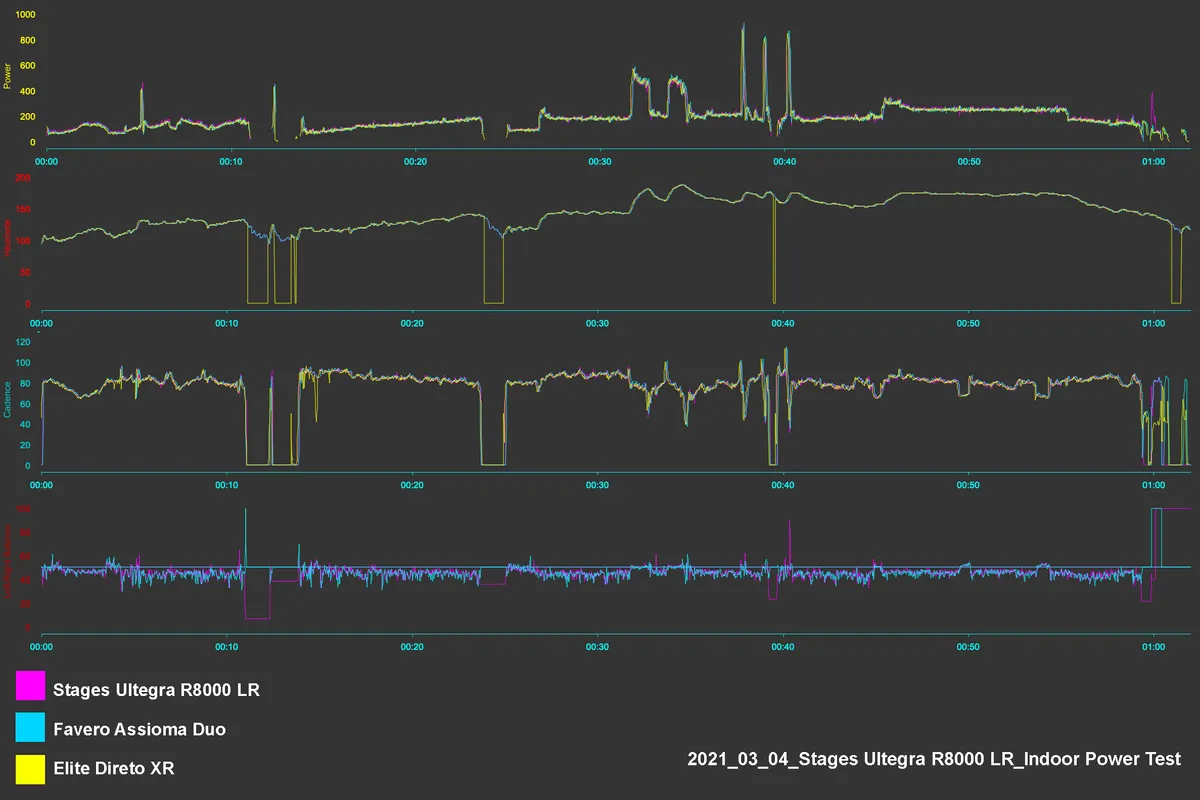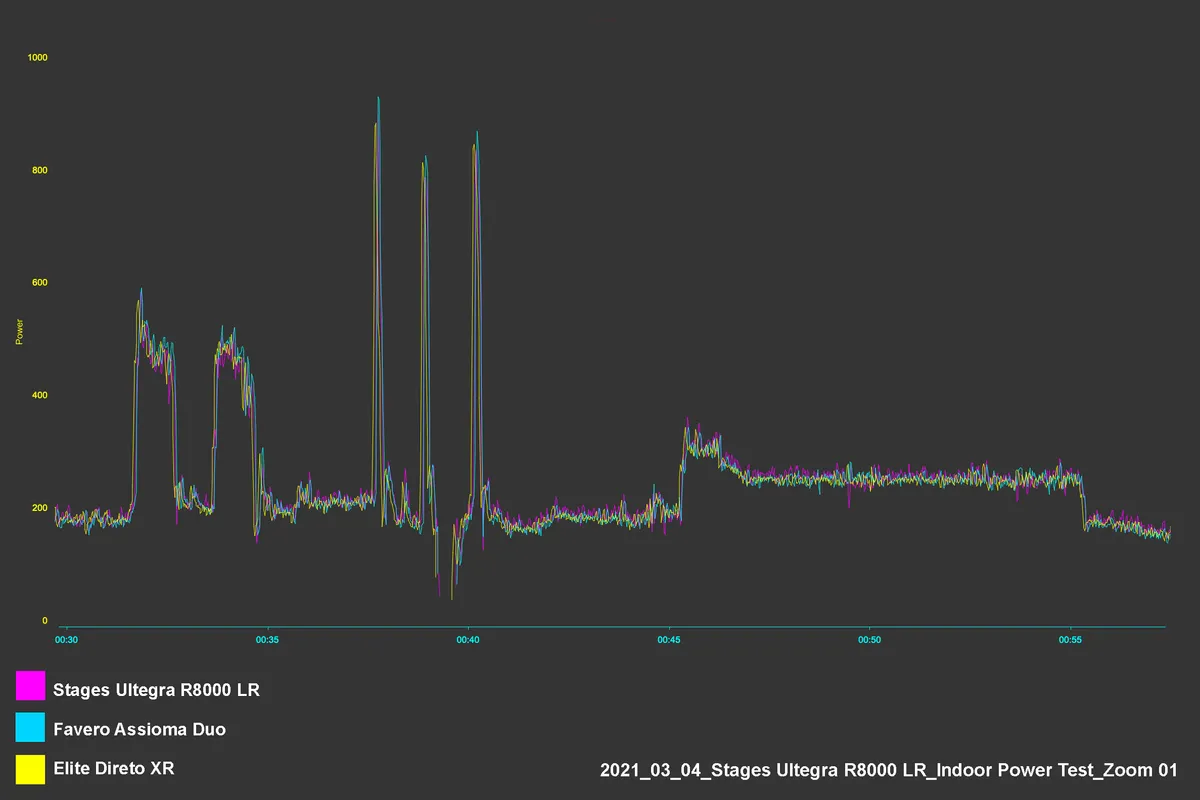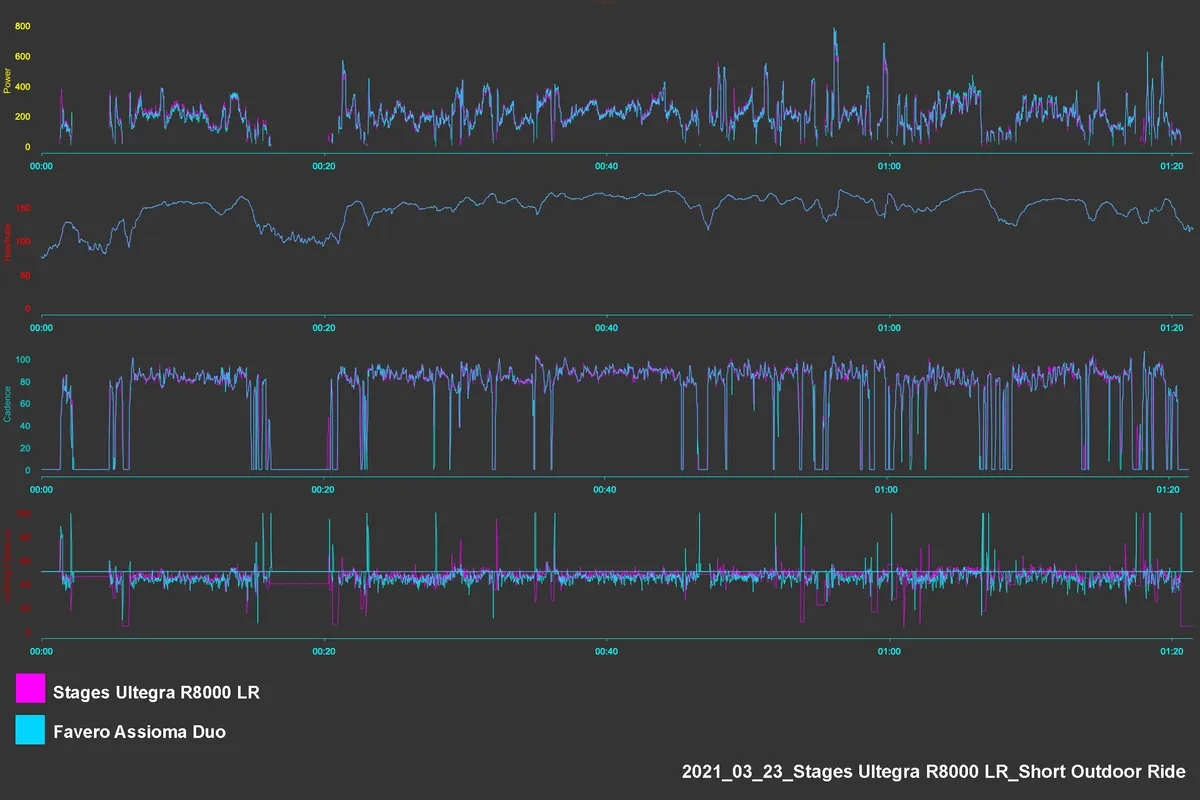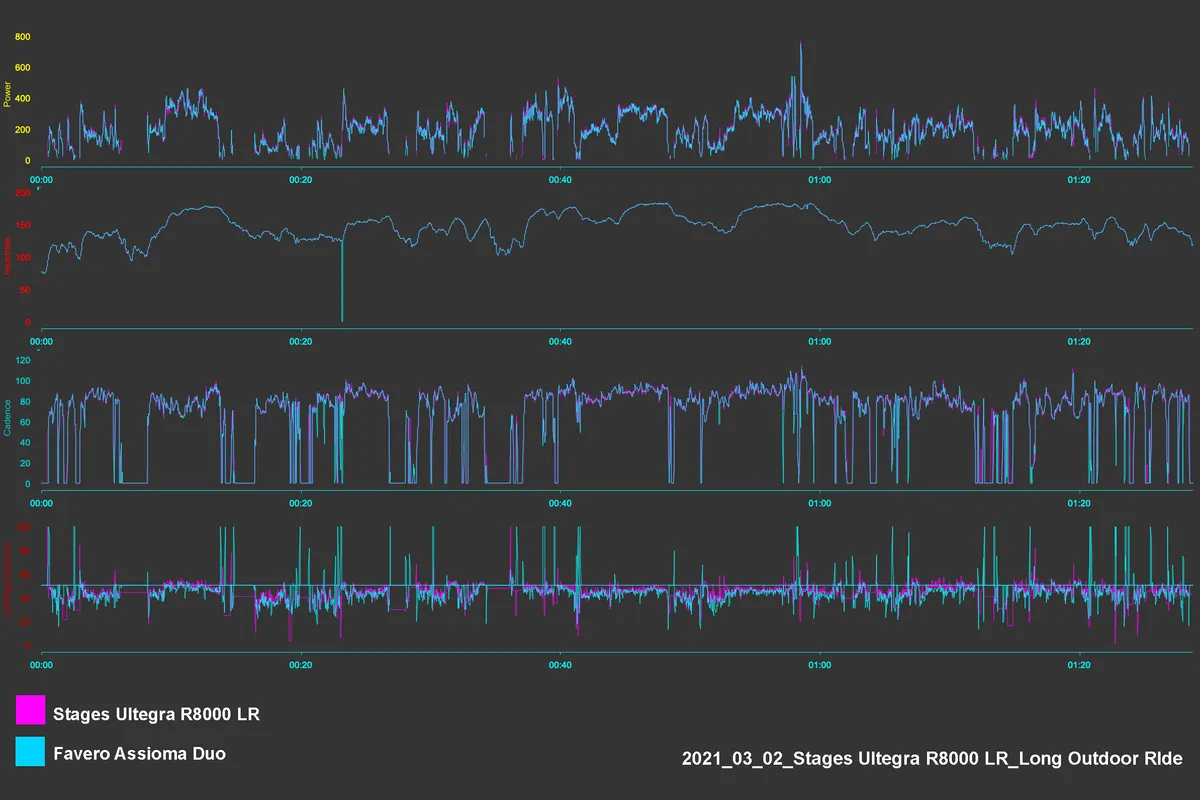The Stages Power LR is a dual-sided power meter built around a standard Shimano Ultegra R8000 crankset. It produces accurate and reliable power data and integrates effortlessly with Shimano drivetrains, with only a negligible 35g weight penalty.
Perhaps most renowned for introducing the cycling world to relatively cheap left-only power meters, Stages now makes a wide range of left-sided, right-sided and dual-sided power meters based around a wide range of cranks.
Comprising two separate power meter cranks, the Power LR measures the effort produced by each leg independently and combines the data from each to determine total power output.
Stages Power LR Shimano Ultegra R8000 installation
Being built around a standard Shimano Hollowtech II crankset, the Stages Power LR can be installed and removed just as easily as any other similar crankset. It’s one of our favourite crank standards for road, gravel and MTB, precisely because it’s so easy to live with.
It is worth noting that if your bike has a very wide bottom bracket area or a rim brake mounted under the bottom bracket, you’ll need to ensure your bike has clearance for the power meter pod on the non-driveside chainstay.
Stages suggests placing a 10mm Allen key between your current crank and the chainstay, midway down the crank. If it fits, you should be good to go. If you’re not 100 per cent sure, you can contact Stages directly with details of your bike and it will double-check.
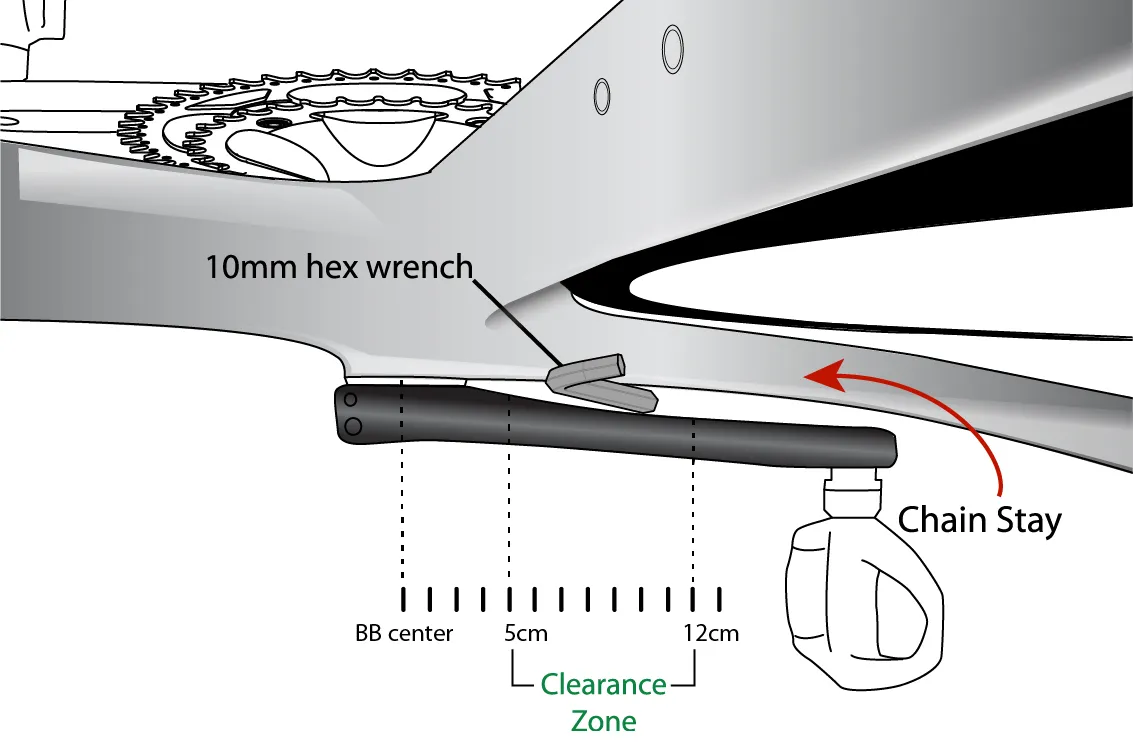
To install the crankset, you’ll need a torque wrench with a 5mm Allen key head and a Shimano crank arm preload cap tool.
Stages recommends using a torque wrench on the crank arm pinch bolts because failing to do so can cause the power meter to read inaccurately. For Shimano cranks, the recommended torque range is 12Nm to 14Nm.
The process does take slightly longer than installing or removing power meter pedals, for example, but it’s also unlikely to cause anyone with multiple bikes much aggravation (provided they all have Shimano bottom brackets). It’s a five- rather than two-minute job.
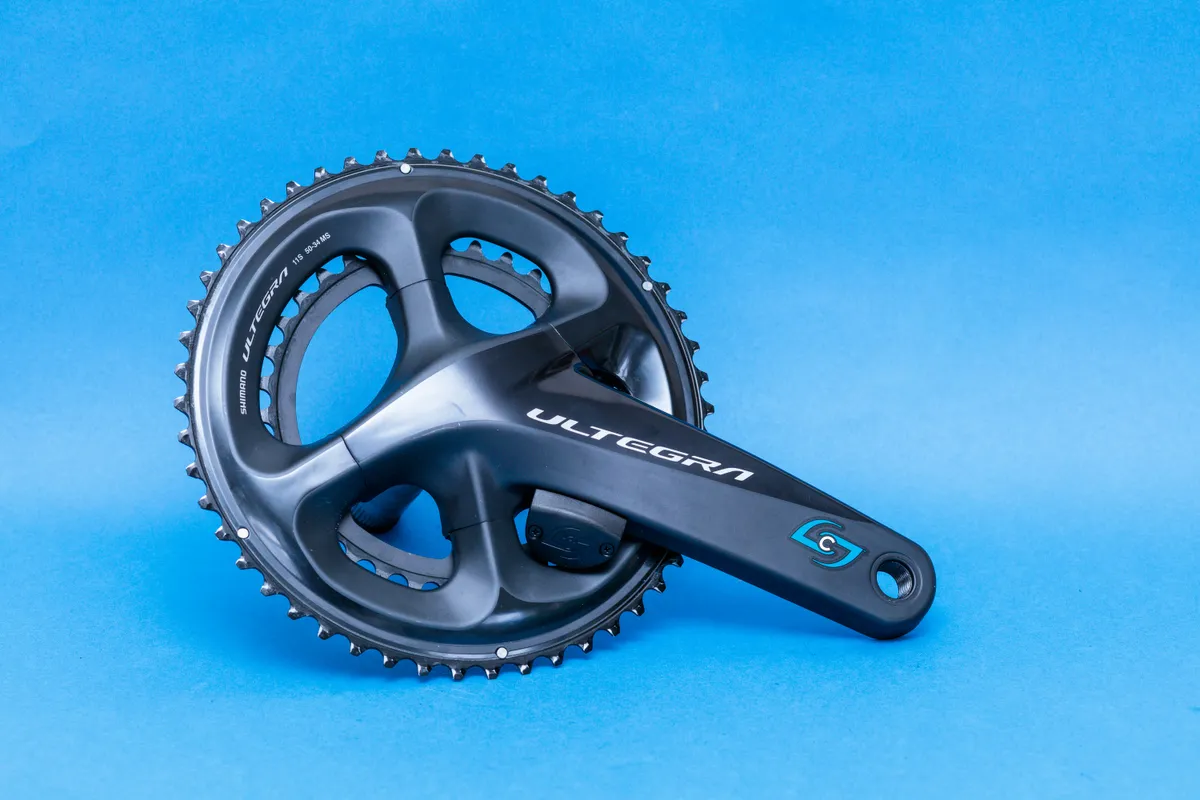
As with any new power meter, it’s worth downloading the manufacturer's support app and checking the firmware is up to date. This should ensure you get the most accurate data possible.
In this case, that’s the StagesPower smartphone app (available for iOS and Android), and you can also use this to check battery life levels, and confirm the two sides of the power meter are linked together and broadcasting as one unit.
The StagesPower app can also be used for high-speed data analysis, which samples torque and force data at a rate of 64-hertz. This gives you data with 16 times more resolution than when recording via ANT+ (which samples at a rate of 4-hertz), though isn’t as in-depth as competitors like the Verve InfoCrank, which has a 256-hertz sample rate.
Primarily aimed at advanced track and mountain bike cyclists, this feature can be used to analyse standing starts or sprints in greater detail.
Stages Power LR Shimano Ultegra R8000 usage notes
Buying a crank-based power meter does limit you to a single crank length and chainring bolt circle diameter (BCD), which may be a consideration for riders taking part in multiple disciplines. The smallest chainring available for the 110 BCD found on this crankset has 34 teeth, for example.
Given this, a better option for dedicated mountain bike or off-road riders could be the Stages Power LR power meters based around Shimano’s XT or XTR cranks.
There’s currently no dual-sided offering for Shimano’s GRX gravel-specific crankset though, and Stages also only makes dual-sided power meters based around Shimano cranks.
If you’re a SRAM or Campagnolo user, unless you’re happy to mix and match components from different brands (assuming they are compatible), you’ll have to settle for a left-only power meter or simply look elsewhere.
A crank-based power meter also limits you to a specific bottom bracket standard too, though the availability of adaptor bottom brackets to fit Shimano cranks likely makes this a non-issue for most bikes.
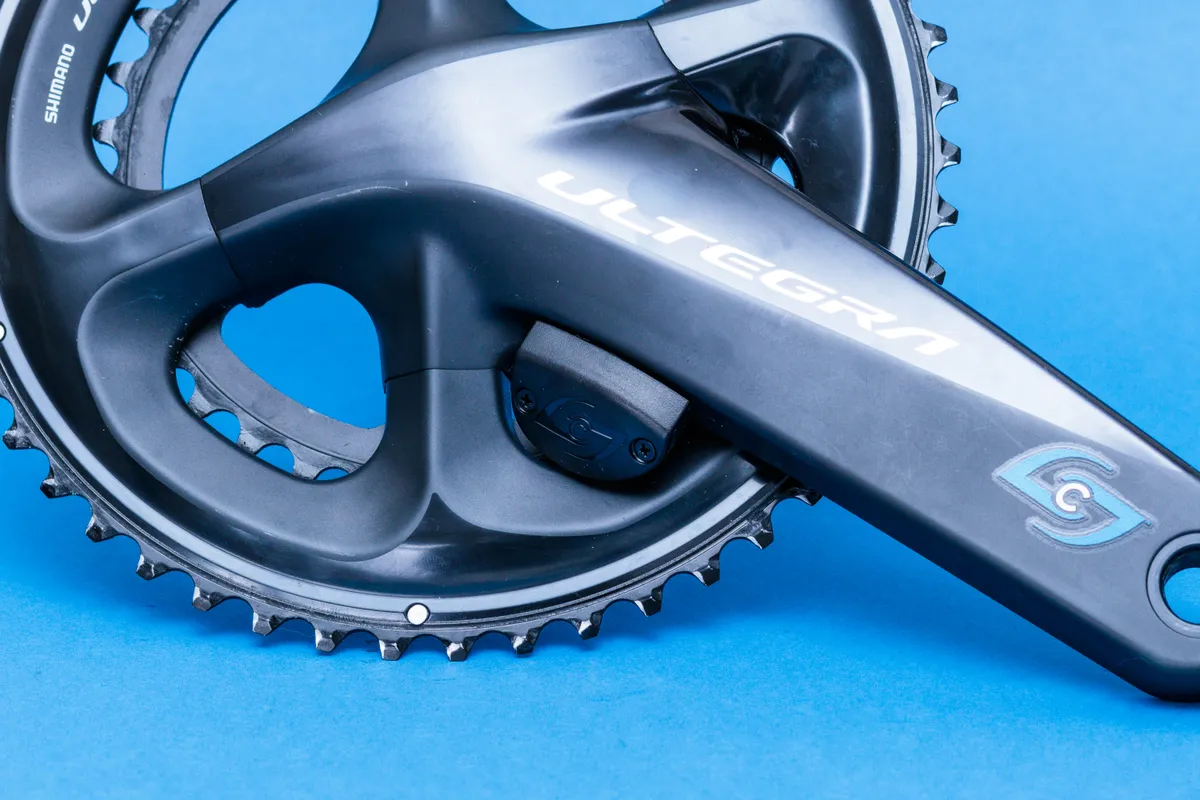
On the flip side, the crank arm placement is well protected from crash or accidental damage, which could be of concern to racers or those who ride gravel or off-road.
Connecting the unit to a Garmin Edge bike computer is a simple affair, with only the non-driveside crank transmitting an ANT+ signal once both power meters are linked together. If you’re connecting via Bluetooth (on Zwift or other indoor cycling apps, for example), both sides of the power meter may appear as separate units. In this instance, you should connect to the left (non-driveside) unit, which will then transmit power data from both sides.
Out on the road, it functions just like any other Shimano Ultegra R8000 crank, which is to say excellently. The updated chainring tooth profiling means it runs quietly even when cross-chaining, and shifting quality is up there with the best.
The stout, hollow aluminium cranks and 24mm steel spindle make for a lightweight, stiff crankset too. It’s a well-proven formula that few will be able to find fault with (although, like anything, it isn’t infallible).
When the time comes, replacing the batteries on either side of the power meter is simple. On the driveside crank, you’ll need a small Phillips head screwdriver to remove the battery cover. On the non-driveside, the battery cover can be removed by hand.
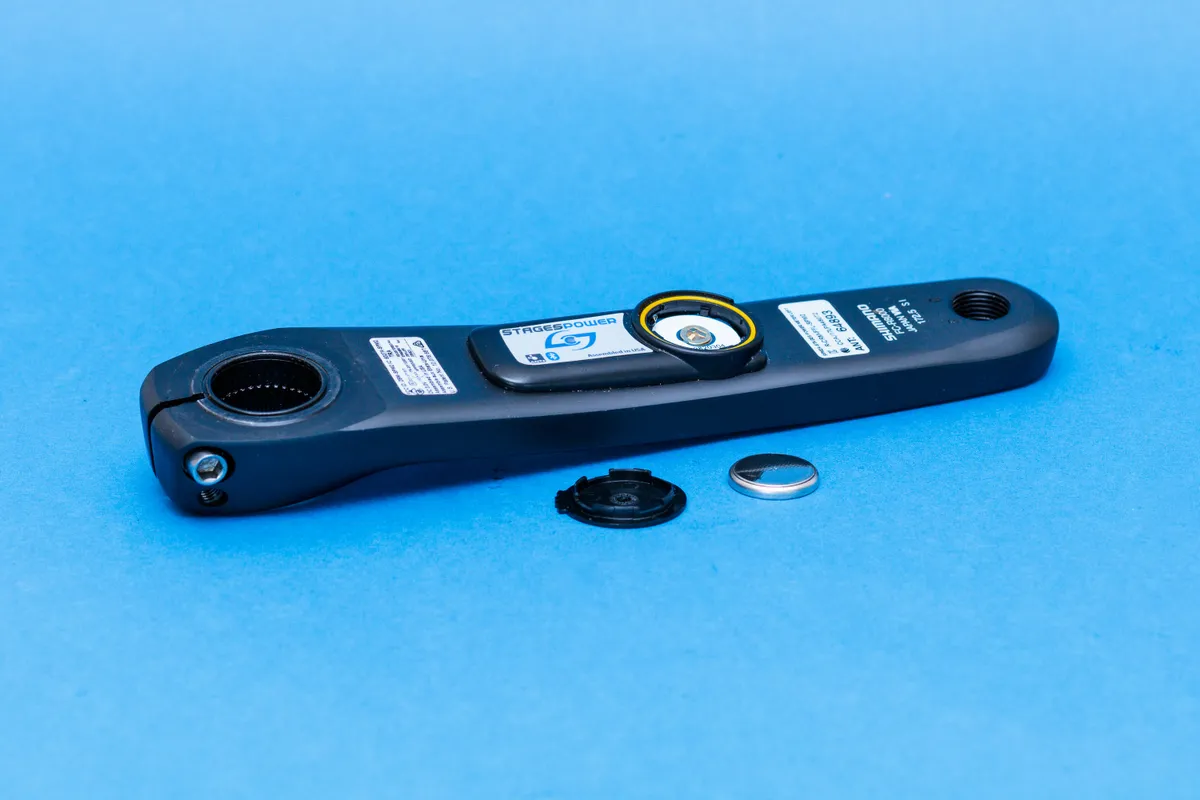
I have had problems in the past with the small retaining tabs on Generation 1 Stages battery doors breaking and needing to be replaced (Stages even has an entire support page dedicated to this topic). The battery door design has since been amended to resolve this issue, and I didn’t experience any such issues during my testing.
Nevertheless, its thin plastic construction still doesn’t feel as indestructible as the threaded metal battery cover on the Quarq DFour DUB power meter, for example.
Stages says the batteries should last around 150 hours. I didn’t log that much time on the cranks, but I didn’t have any issues with battery drainage or power dropouts, so I don’t expect any problems there.
If you do suffer any issues – battery related or otherwise – Stages offers a one-year warranty that covers manufacturing defects. That’s one of the shortest warranties among the major power meter manufacturers, though, with most offering at least two years cover and some offering much more (e.g. the warranty period for Power2Max power meters is five years).
Stages Power LR Shimano Ultegra R8000 data accuracy
The Stages Power LR is claimed to be accurate to +/- 1.5 per cent, within a power range of zero to 2,500 watts and a cadence range of 20 to 220 rpm. It uses accelerometers to determine cadence, so no magnets are required on your frame.
In use, it tracked benchmark power meters, such as a set of Favero Assioma Duo power meter pedals and an Elite Direto XR smart trainer, very well, with no major deviations under normal use.
Stages recommends performing a zero-offset calibration every time you install the crank on a bike, and then once a week thereafter, or before important training sessions or things like an FTP test. This can be done via a compatible bike computer or the StagesPower app.
Beyond that, Stages says the unit will keep itself accurate using its inbuilt active temperature compensation and auto-zero functions.
It was possible to confuse the Stages by pedalling with only one foot clipped in. When using only the left (non-driveside) pedal, the Stages would initially over report then settle down after about 20 seconds. When using only the right (driveside) pedal however, the power meter didn’t report any data at all.
I double-checked I was simply connected to the left crank arm only, but that wasn’t the issue. Stages says this is normal behaviour based on the way the two independent power meters (one on each crank arm) communicate with each other, and that the right will start reading on its own after 45 seconds.
Under normal pedalling circumstances, both sides reported correctly, though. It’s only this specific usage case where the Stages has its quirks.
Single-leg pedalling drills are commonly associated with riders returning to training from leg injuries, but otherwise aren’t something most cyclists will do very often, if at all, so I don’t see this being a major issue for too many.
Stages Power LR Shimano Ultegra R8000 conclusion
All things considered, the Stages Power LR is an accurate and reliable power meter, and a great option for cyclists who want a dual-sided power meter based around a Shimano crankset.
It integrates seamlessly into Shimano drivetrains, with only a tiny weight increase and no decrease in user-friendliness or on-bike performance.
It’s a slight shame there are no equivalent dual-sided options for SRAM or Campagnolo cranksets, but if you don’t mind mixing component brands on your bike (assuming they’re compatible), there’s no reason to avoid this power meter crankset from a pure performance point of view.
How we tested
I put seven of the latest power meters head-to-head to find out which is worth your hard-earned cash.
As well as testing the accuracy and reliability of the data on each unit, consideration was given to ease of installation, indoor versus outdoor use, firmware, power calculations, drivetrain compatibility, warranties, compatibility with external units such as bicycle computers, and any other additional features.
Each power meter was tested indoors on a smart trainer and outdoors in all weathers. To assess accuracy, captured power data was compared against data from trusted benchmark power meters recording simultaneously across multiple bicycle computers.
Also on test
Product
| Brand | Stages_cycling |
| Price | €849.00, £715.00, $789.99 |
| Weight | 717g |
